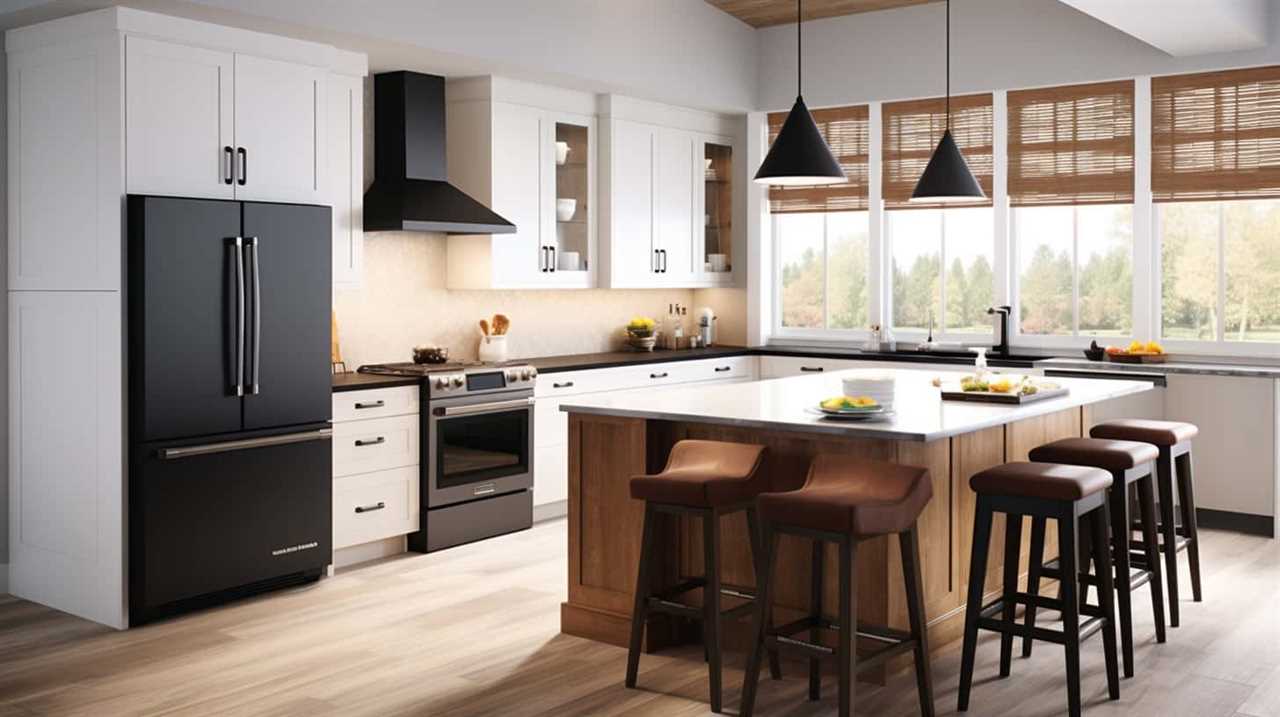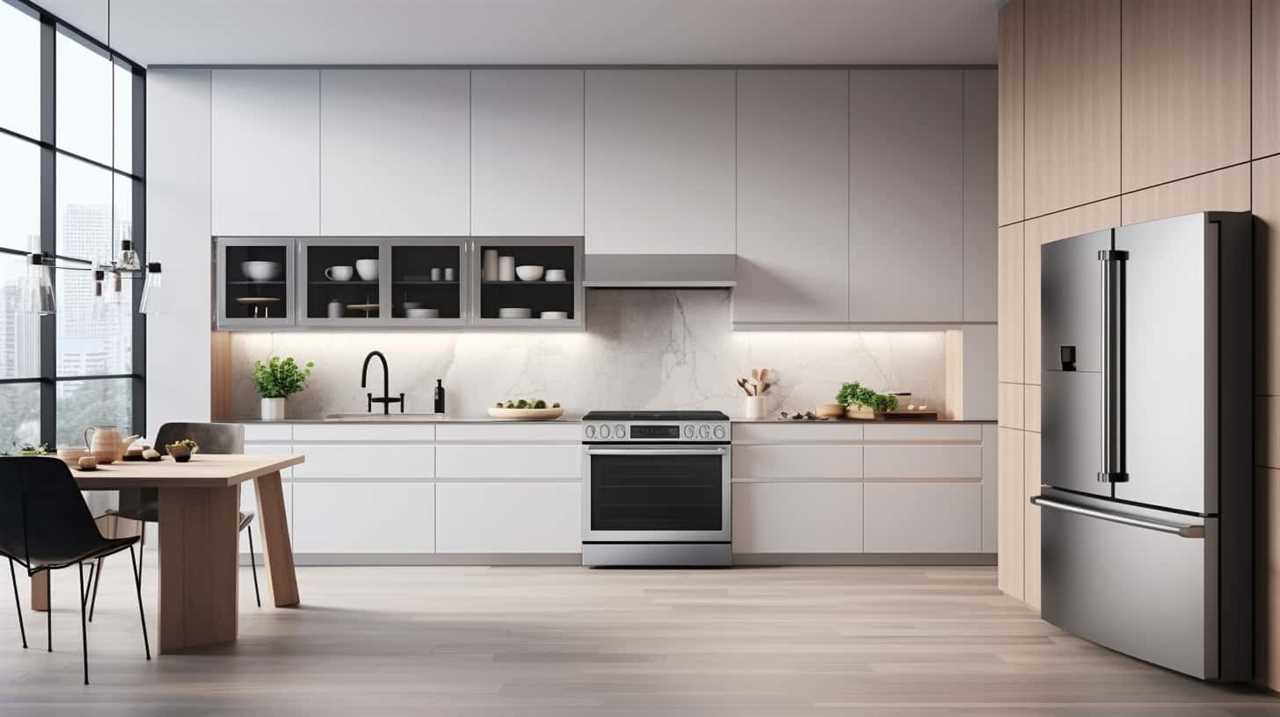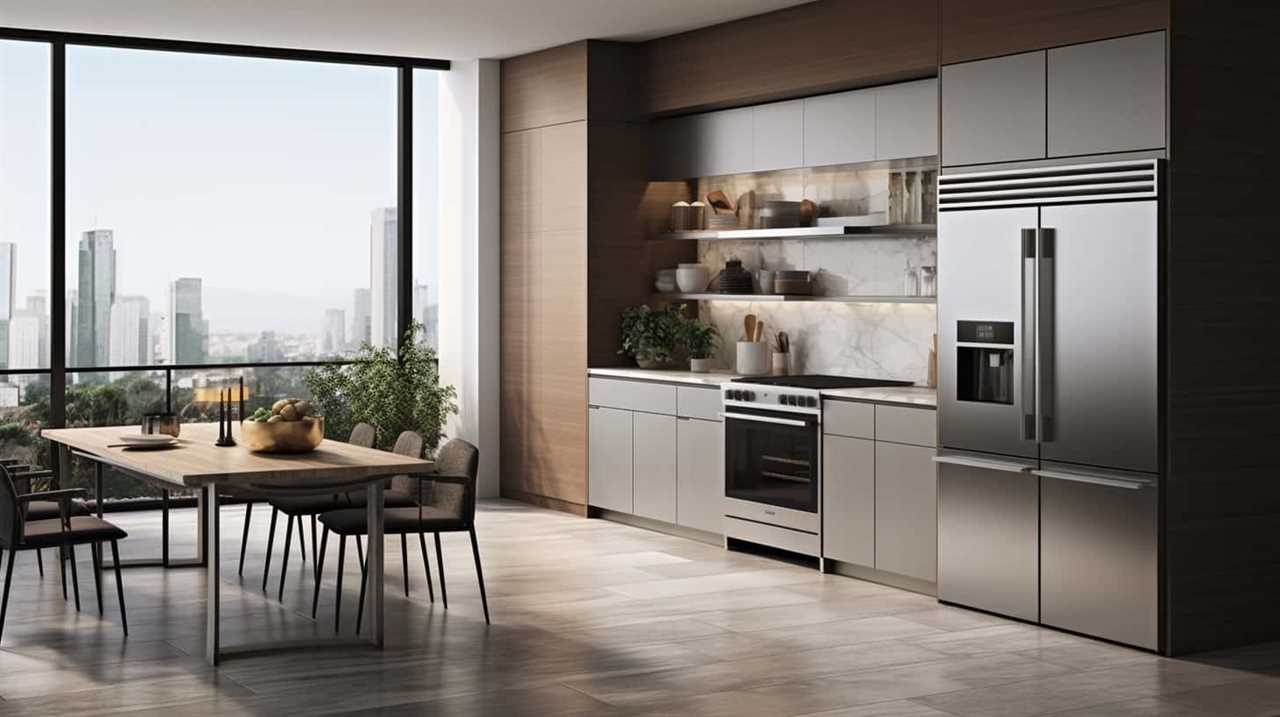Ever pondered how your living room appliances effortlessly communicate with one another?
In this article, we will delve into the intricate web of connections that bring your entertainment system to life. From HDMI and AV connections to wireless options and smart home integration, we will explore the technical wizardry that ensures a seamless and immersive experience.
So buckle up, because we’re about to embark on a journey to unravel the mysteries of your living room’s interconnected appliances.
Key Takeaways
- HDMI and AV connections are used to transmit audio and video signals between devices in the living room.
- Wireless connectivity options like Bluetooth and Wi-Fi provide a clutter-free and convenient setup in the living room.
- Power surges can be damaging, so it is important to use surge protectors for protection and practice cable management.
- Wireless audio systems and smart home integration enhance convenience and provide flexibility in the living room.
HDMI and AV Connections
In the living room, we connect the appliances using HDMI and AV connections.

HDMI (High-Definition Multimedia Interface) and AV (Audio/Video) connections are two commonly used methods to transmit audio and video signals between devices.
HDMI offers superior quality compared to AV connections due to its ability to transmit uncompressed high-definition audio and video signals. This results in sharper images, richer colors, and clearer sound.
On the other hand, AV connections are limited in their ability to transmit high-definition signals, resulting in lower quality output.
Troubleshooting common connection issues with HDMI and AV connections include checking for loose cables, ensuring the correct input/output settings on devices, and verifying compatibility between devices.

Wireless Connectivity Options
We use wireless connectivity options to connect the appliances in our living room.
Bluetooth technology and compatibility are one such option. This technology allows for seamless communication between devices within a short range. Many modern appliances, such as speakers and headphones, come with built-in Bluetooth capabilities, making it easy to stream audio wirelessly from our devices.
Additionally, Wi-Fi connectivity is another popular option for streaming and remote control. By connecting our appliances to the home Wi-Fi network, we can access online streaming services, control our devices remotely using smartphone apps, and even integrate our appliances into a smart home ecosystem. Wi-Fi also allows for faster data transfer speeds, ensuring a smooth and uninterrupted streaming experience.
With these wireless connectivity options, our living room appliances can be effortlessly connected and controlled.

Power and Surge Protection
How do we ensure that our living room appliances are protected from power surges? Power surges can be damaging to our valuable electronics and can even lead to fires. To protect our appliances, it is important to use surge protectors and manage the power consumption effectively.
One way to manage power consumption is by using smart power strips. These power strips come with built-in surge protection and have the ability to automatically shut off power to devices that are not in use, reducing standby power consumption. Additionally, cable management is crucial to prevent power cords from becoming tangled or damaged, which can increase the risk of power surges.
To illustrate the importance of power and surge protection, here is a table showcasing common living room appliances and their power consumption:
| Appliance | Power Consumption (Watts) |
|---|---|
| Television | 100-400 |
| Gaming Console | 50-150 |
| Soundbar | 20-100 |
| Blu-ray Player | 20-50 |
| Set-top Box | 10-30 |
By being conscious of power consumption and implementing surge protection measures, we can ensure the longevity of our living room appliances and minimize the risk of damage caused by power surges.

In the next section, we will explore the audio and speaker systems commonly found in the living room.
Audio and Speaker Systems
To continue our exploration of the living room’s appliances, let’s delve into the audio and speaker systems that enhance our entertainment experience.
In today’s digital age, wireless streaming has become an integral part of audio systems. With the advent of technologies like Bluetooth and Wi-Fi, it’s now possible to wirelessly connect our devices to speakers and enjoy high-quality sound without the hassle of cables.
Moreover, the demand for immersive audio experiences has led to the popularity of surround sound systems. These systems utilize multiple speakers strategically placed around the room to create a realistic and enveloping audio environment.

Smart Home Integration
Our exploration of the living room’s appliances continues with the integration of smart home technology. Smart home integration allows for a seamless connection between various devices and systems within the home, enhancing convenience, efficiency, and security.
Here are three key aspects of smart home integration:
- Home Security Systems: Smart home integration enables integration with home security systems, providing advanced features such as remote monitoring, motion detection, and real-time alerts. With the ability to control and monitor security cameras, alarms, and door locks from a single interface, homeowners can have peace of mind knowing their living room and entire home are protected.
- Voice Control Assistants: Smart home integration also includes voice control assistants like Amazon Alexa or Google Assistant. These assistants allow users to control their living room appliances, such as TVs, speakers, and lights, simply by using voice commands. This hands-free control provides a convenient and effortless way to interact with the living room’s devices.
- Automation and Scheduling: Another benefit of smart home integration is the ability to automate and schedule tasks. With the help of smart home hubs or apps, users can create customized routines to control their living room appliances. For example, they can set the lights to turn on automatically when they enter the room or schedule the TV to turn off at a specific time. This automation enhances convenience and energy efficiency.
With smart home integration, the living room becomes a hub of connectivity, convenience, and security. Homeowners can enjoy the benefits of advanced home security systems and easily control their appliances using voice commands or automated routines.
Frequently Asked Questions
What Are Some Common Troubleshooting Steps for HDMI and AV Connections?
When troubleshooting HDMI connections, common issues may include no signal or poor picture quality. Troubleshooting steps for AV connections involve checking cables, audio settings, and ensuring proper device selection.

How Can I Improve the Wireless Connectivity of My Living Room Appliances?
To improve Wi-Fi signal and eliminate interference, we can strategically position our wireless router, use a Wi-Fi extender, and ensure that there are no obstacles blocking the signal in our living room.
Are There Any Recommended Power Surge Protection Devices for Living Room Appliances?
We recommend using power surge protection devices or power strips for your living room appliances. These are designed to protect your devices from electrical surges and ensure their safety and longevity.
What Are Some Popular Audio and Speaker Systems for Enhancing the Living Room Experience?
Popular audio and speaker systems for enhancing the living room experience include wireless streaming options and surround sound systems. These systems provide a high-quality audio experience, immersing us in the sounds of our favorite movies and music.
How Can I Integrate My Living Room Appliances Into a Smart Home System?
To integrate our living room appliances into a smart home system, we can connect them through a central hub or use smart plugs. This enables remote control, automation, and energy efficiency, enhancing our overall living experience.

Conclusion
In conclusion, the appliances in the living room can be connected through various methods such as HDMI and AV connections, wireless connectivity options, power and surge protection, audio and speaker systems, and smart home integration.
By utilizing these technologies, users can enhance their entertainment experience and seamlessly control their devices.
It’s important to choose the right connections and ensure proper power management to optimize performance.
Remember, as the saying goes, ‘A chain is only as strong as its weakest link.’











